The most important theaters and opera houses in Europe (Vienna, Berlin, Milan, Venice, Paris) were built in the second half of the 19th century. One of the most popular pastimes in city life and bourgeoisie was attending musical performances, as it combined entertainment and culture. Therefore, it is natural that there was a demand for the construction of an opera house in Pest, which aspired to be a big city.
Theatrical and opera performances were already held in the Rondella of the city wall of Pest, which was transformed into a theatre in 1774. Until the opening of the German Theatre in 1812, it served the needs of the Hungarian and German audiences alternately. However, due to its demolition in 1815, a new place had to be found for Hungarian theatre, and the idea of building a Hungarian theatre arose, the importance of which was emphasized by Count István Széchenyi in his 1832 pamphlet. It didn't take long: the Hungarian Theatre in Pest was built in 1837 (renamed the National Theatre in 1840), although not on the banks of the Danube as imagined by Széchenyi, but on the corner of today's Rákóczi Road and Museum Boulevard. The institution has been performing operas since its opening, and even the first successful pieces of the Hungarian national opera were performed here: in 1840 the Báthory Mária, in 1844 the Hunyadi László, then in 1861 the Bánk bán.
Miklós Ybl (left) and Baron Frigyes Podmaniczky (right) (source: Vasárnapi Ujság, 28 September 1884)
It already came up in the 1840s, but after the Compromise, the construction of an opera house became urgent. Not only because of the popularity of the genre, which attracted more and more people, but also because of the not very spacious building of the National Theatre, which did not have enough space to hold rehearsals, store sets and costumes. And by this time, two new genres were already knocking on the door of the theatre: folk play and operetta.
The National Theatre could no longer meet the needs. Not so much that between 1872 and 1874 dramatic and musical performances were also held on István Square, today's Klauzál Square. This certainly drew attention to the need for a 'song theatre', as in 1872 Prime Minister Menyhért Lónyay asked the director of the National Theatre, Bódog Orczy, to formulate his proposals for the establishment of the Opera House.
A contemporary depiction of the Opera House (source: Vasárnapi Ujság, 28 September 1884)
The first question was the location of the building. The ideas included today's Erzsébet Square, the area around Károly Barracks and today's Szabadság Square. In 1873, however, they decided on Hermina Square, which was next to Andrássy Avenue, which was at the time under construction. It was further away from the city centre, but it was definitely easy to reach, and there was no building in the square, only an old market, so construction could begin immediately. Ferenc József gave his approval on 25 June 1873, and also financially supported the construction of the Opera House. For announcing and judging the design tenders, a special committee was set up, chaired by Baron Frigyes Podmaniczky.
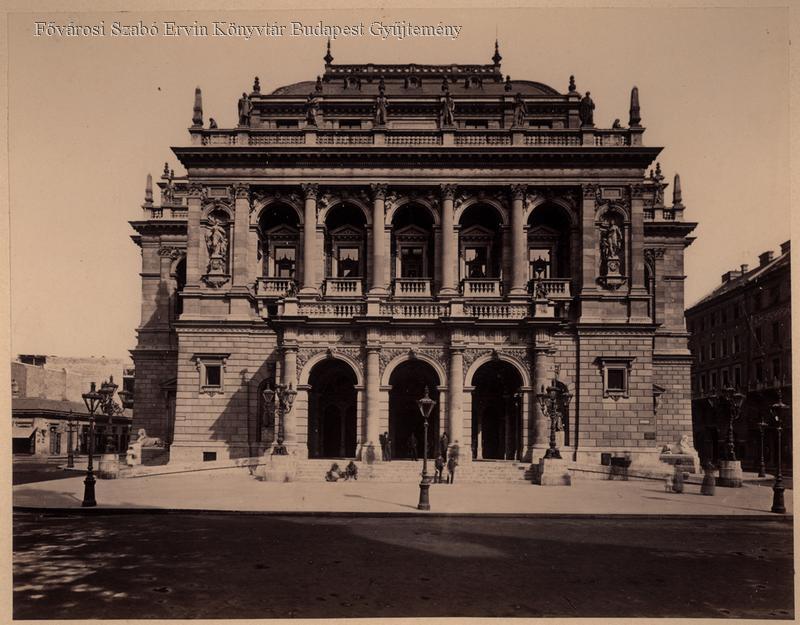
Shortly after its opening, in 1885 (source: FSZEK Budapest Collection)
Six architects were invited to take part in the competition: Miklós Ybl, István Linzbauer, Imre Steindl, Antal Szkalnitzky, Ludwig Bohnstedt from Gotha and Ferdinand Fellner from Vienna. The committee finally decided to entrust the construction of the Opera House to the most prominent Hungarian architect, Miklós Ybl.
Work actually began in 1875, as the Vasárnapi Ujság reported on 10 October:
“The construction of the Opera House on Hermina Square is underway. The earthworks will begin on the 11th and will be completed by winter. ”
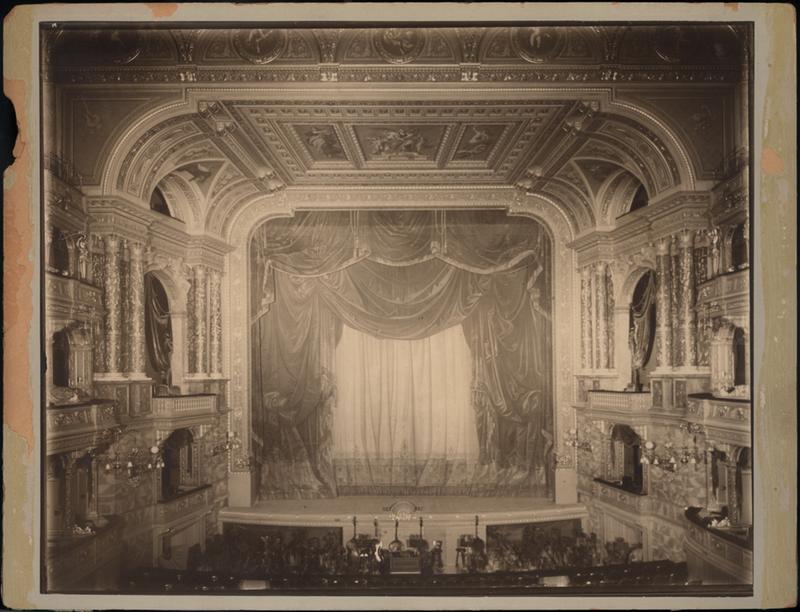
The stage in the 1880s (source: FSZEK Budapest Collection)
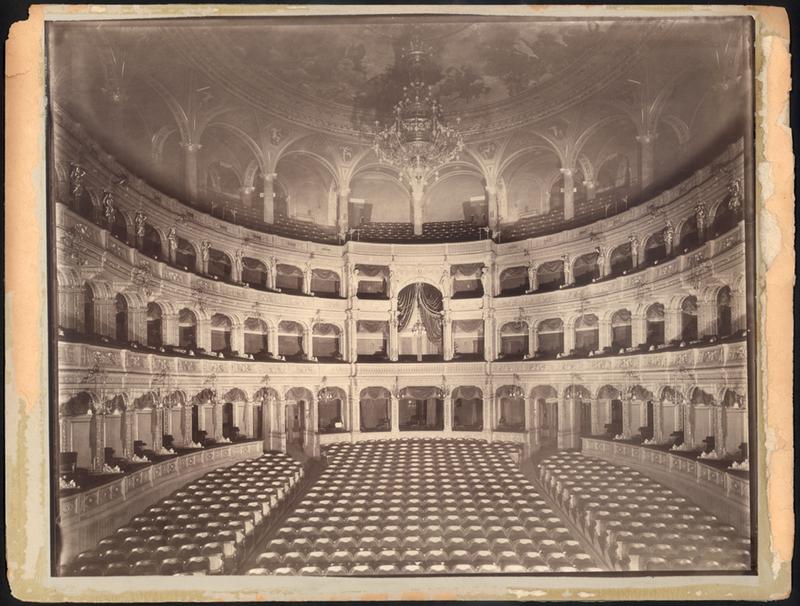
The auditorium from the 1880s (source: FSZEK Budapest Collection)
The construction of the Opera House was a national affair, and the contemporary press regularly reported on it. According to preliminary plans, the building was to be completed by the fall of 1879, but due to technical and financial problems, the date of handover was constantly postponed. In 1880, Frigyes Podmaniczky, on behalf of the construction committee, stated that if the work was not completed within 5 years, it would be more expedient to shut down the entire enterprise. Fortunately, it was successfully completed by the given time: on 27 September 1884, the Hungarian Opera House was handed over in the presence of the king. At the inauguration ceremony, the audience could watch the first act of Erkel's Bánk bán and Wagner's Lohengrin, as well as the opening of Hunyadi László.
“The public has shown a general interest in this national art institute, which ranks among the most beautiful buildings in terms of both exterior and interior decoration. This ornate palace, will become an honour for Hungarian industry, as it is one of its most beautiful triumphs. ”
- wrote the magazine Magyar Ipar after the opening of the building.
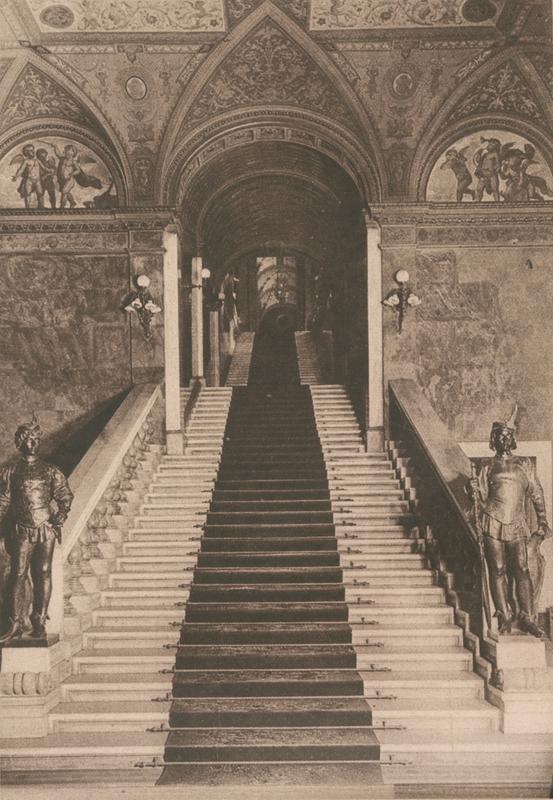
The Royal Stairs of the Opera House (source: FSZEK Budapest Collection)
The building follows the Neo-Renaissance design. According to the building regulations, the driveway was located on the main facade, the ramp of the king's carriage was on the west side and that of the board of directors on the east side. In the two booths next to the arcaded driveway of the main façade, there are statues of Ferenc Liszt and Ferenc Erkel, made by sculptor Alajos Stróbl. He also made the two Carrara marble sphinxes. According to an urban legend, the drunken Endre Ady recognized the features of Léda's face in one of them.
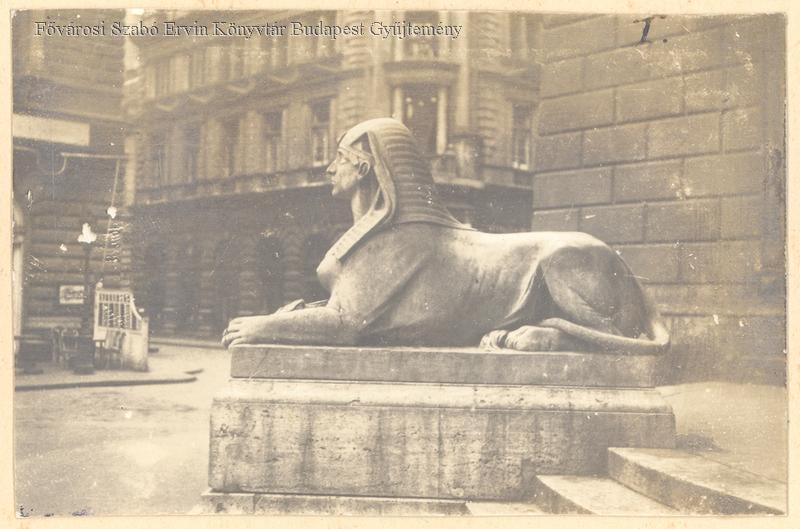
On the next level we can see the four muses: Terpsichore, the patron of dance and chores; Erato, the epitome of love and erotic poetry; Thalia, the muse of comedy and theatre; Melpomene, patron of drama, tragedy and mourning. On the roof terrace are 16 statues of famous composers at the time of construction: Guido d'Arezzo, Orlando di Lasso, Palestrina, Jacopo Perri, Lully, Pergolesi, Mozart, Haydn, Gluck, Weber, Wagner, Meyerbeer, Spontini, Beethoven, Cherubini, Rossini .
“The foyers and the stairwell are exhibited with such lavish light that they almost dazzle the eyes. Marble, gold and velvet everywhere. The audience gets to the floors on soft carpets of finger thickness, with explanatory inscriptions everywhere. The most ornate part of the audience rooms is the first floor foyer, where the patisserie is also located. The cloakroom is in front of the entrance of the armchairs. ”
The burning of the Ringtheater in 1881 warned the builders of the Opera House to be careful. There were more than 400 victims of the tragedy. Ybl followed stricter safety standards: he divided the auditorium into three parts, increased the number of emergency exits, and used the then recently patented Vienna Asphaleia system for stage technology. The novelty of the equipment lies in the fact that the movement of the set and the stage was done by hydraulic cylinders, as opposed to the manual force usual so far, and instead of flammable wood, iron was the basis of the structure. It was used for the first time in the world at the Hungarian Opera House.
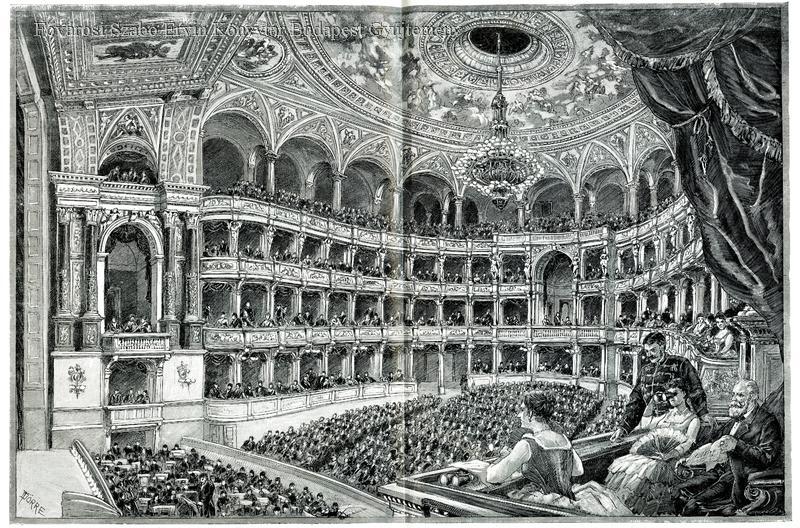
Tivadar Dörre's drawing of the auditorium of the Opera House in 1894 (source: FSZEK Budapest Collection)
Frigyes Podmaniczky also paid attention to the fact that mostly Hungarian masters, companies and artists should work on the construction of the Opera House. The most prominent painters of the era were commissioned to design and create the murals. In the foyer there are the 9 muses of Bertalan Székely, on the ceiling of the ornamental staircase Mór Than's Zene ébredése és diadala [Awakening and triumph of Music] can be seen, and in the auditorium the Zene apoteózisa [apotheosis of Music] painted by Károly Lotz is revealed to the audience.
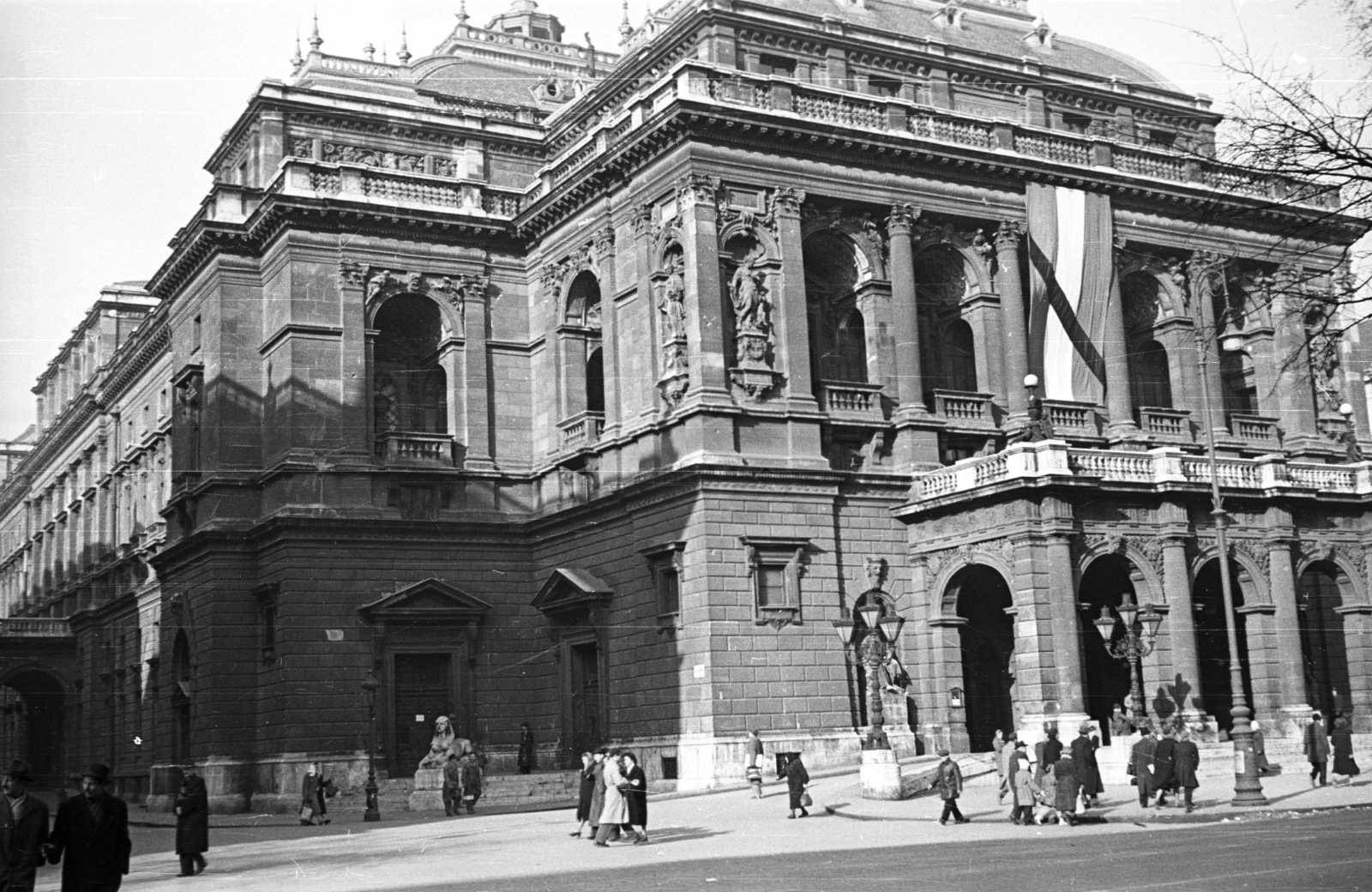
The Opera House in 1956 without the statues of the composers (source: Fortepan / image number: 40082)
The first major transformation took place in 1912 according to the plans of István Medgyaszay: the number of seats was increased, the orchestra trench was lowered and pushed under the stage, a new wardrobe was built, and new heating and ventilation equipment was installed.
By the 1930s, the statues of 16 composers had been completely destroyed (one of them had also fallen on the street), so in 1963 the newly made statues were put in their place. Currently, these composers can be seen on the terrace: Monteverdi, Scarlatti, Verdi, Gluck, Wagner, Mozart, Beethoven, Gounod, Bizet, Donizetti, Tchaikovsky, Rossini, Mussorgsky, Smetana, Glinka, Moniuszko.
There was only little damage to the building during World War II, which could be quickly restored. Many theatre members survived the siege in the locker rooms and cellar of the Opera House. Zoltán Kodály and his family were hiding here at the time.
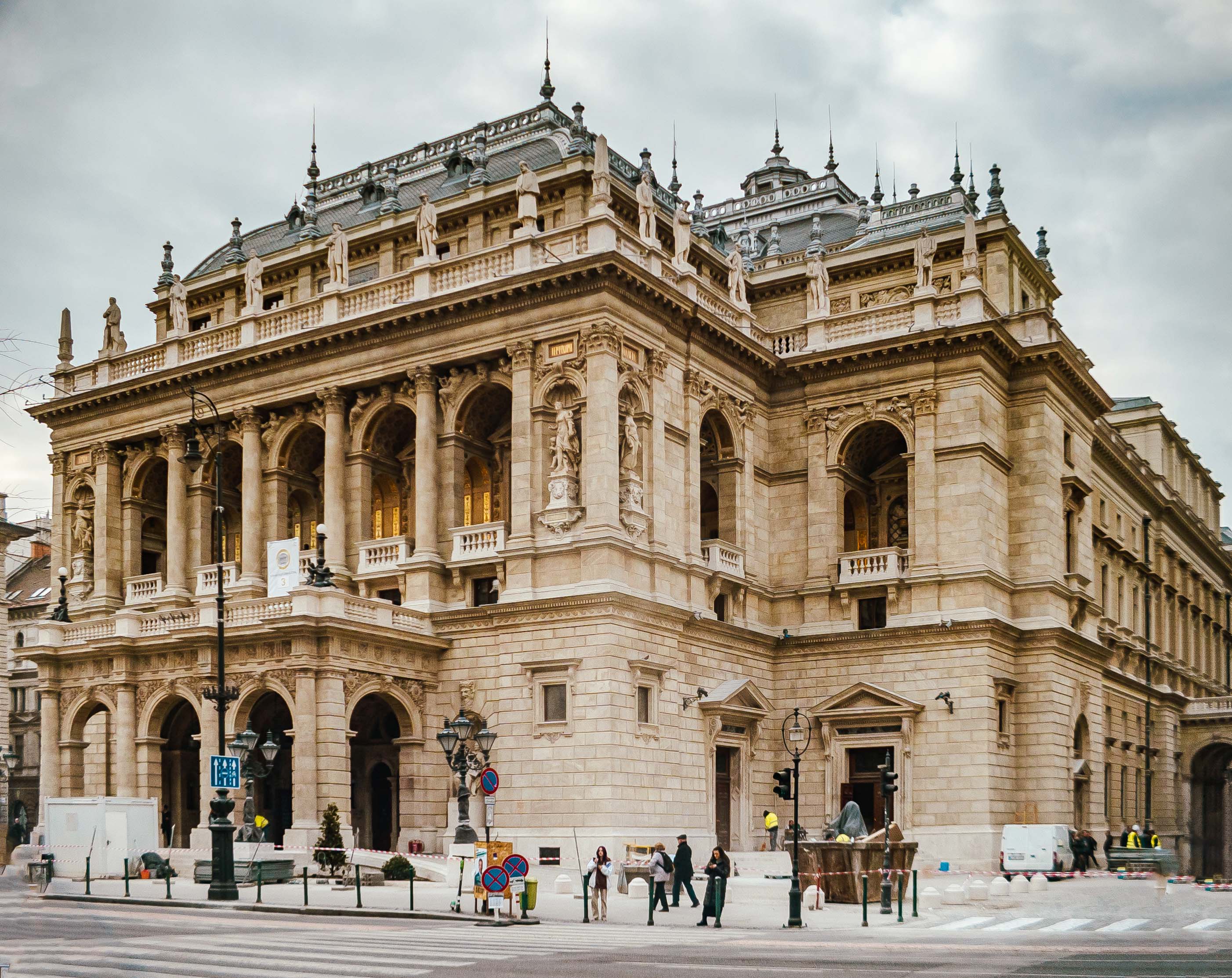
The Opera House nowadays, after the renovation (photo: Balázs Both / pestbuda.hu)
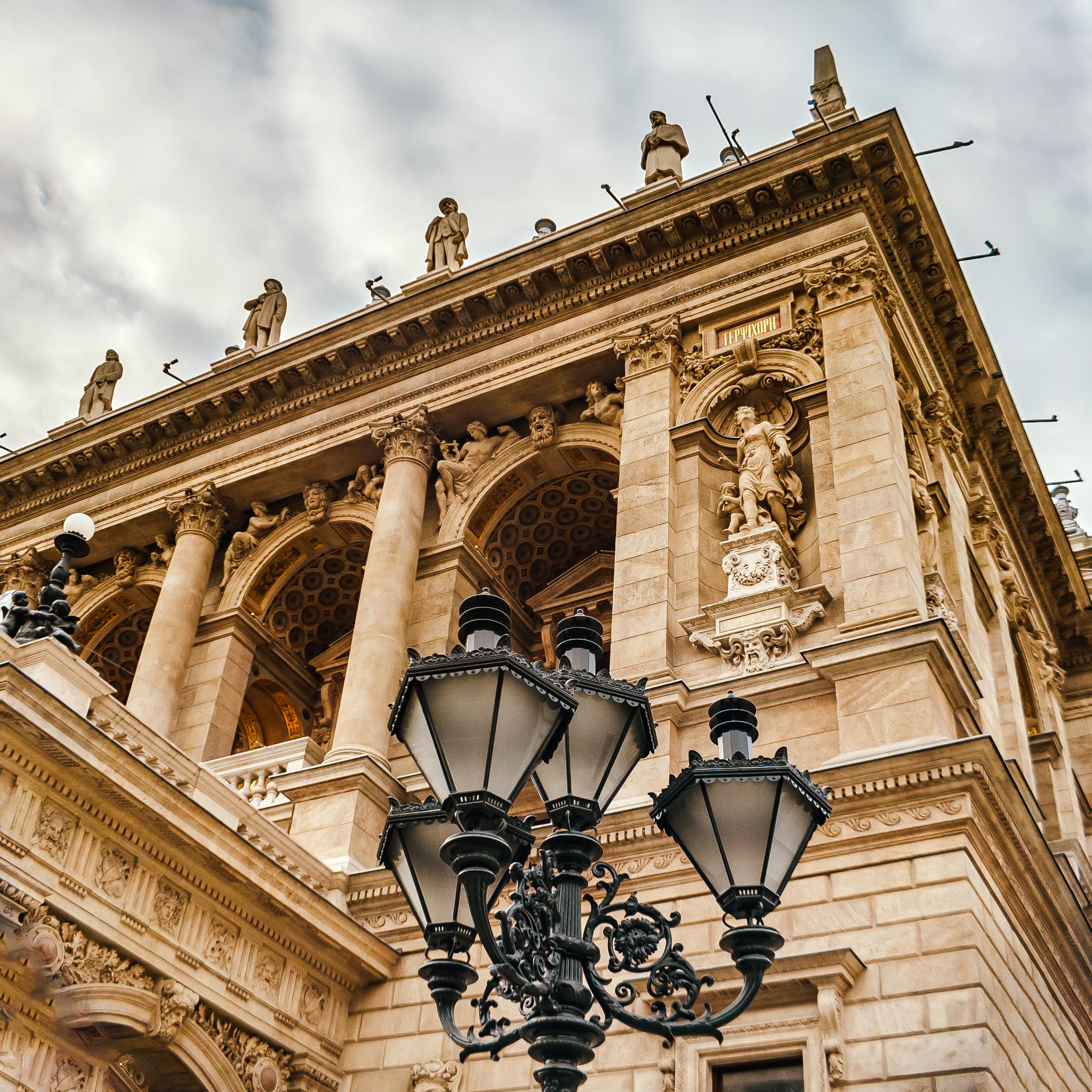
Facade of the Opera House (photo: Balázs Both / pestbuda.hu)
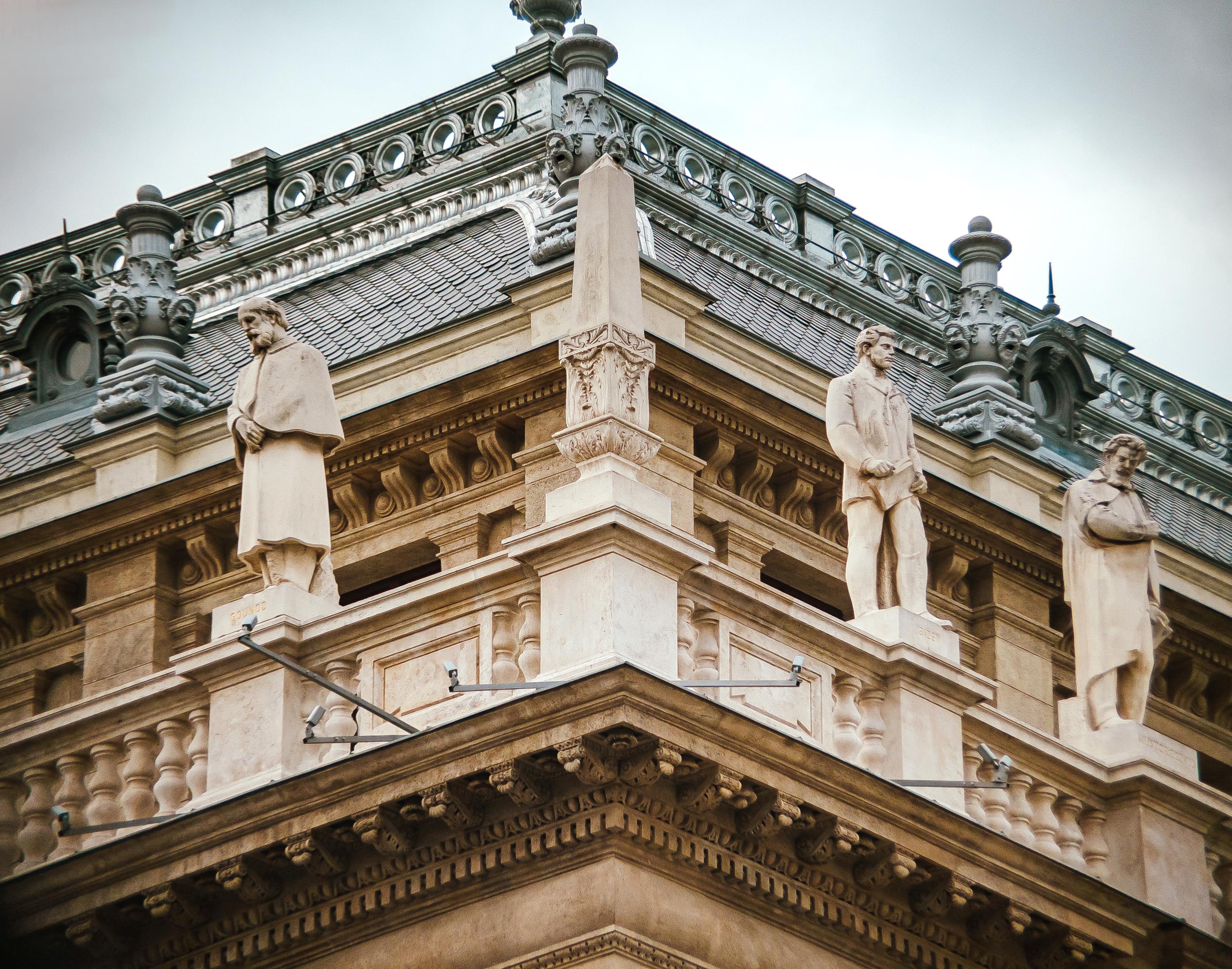
Sculptures of three composers on the terrace: (starting from the left) Gounod, Bizet and Mussorgsky (photo: Balázs Both / pestbuda.hu)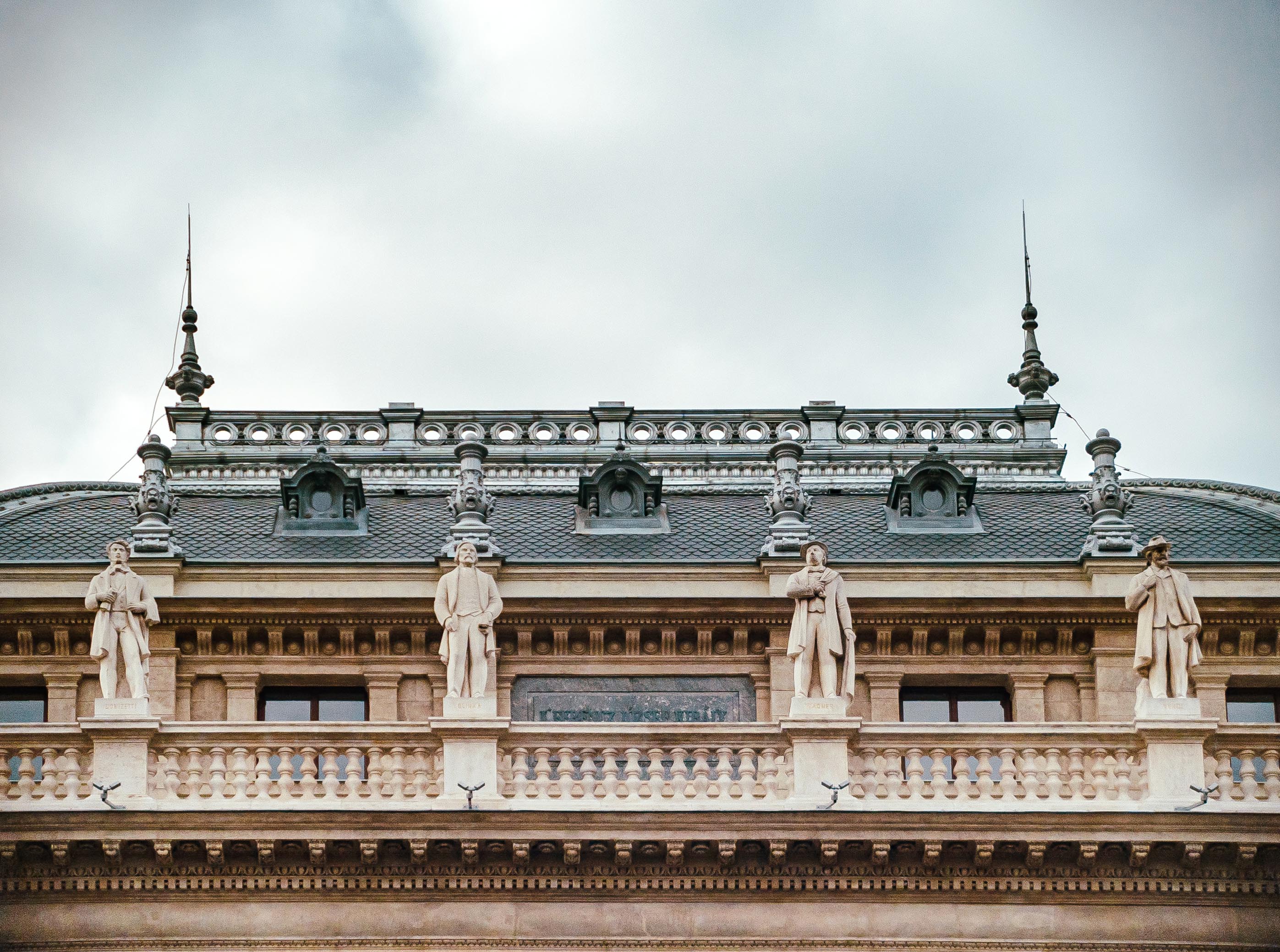
Sculptures of four composers on the terrace: (starting from the left) Donizetti, Glinka, Wagner, Verdi (photo: Balázs Both / pestbuda.hu)
More space problems arose after 1951, when the Erkel Theatre came under the operation of the Opera House. There were no warehouses or rehearsal rooms in the theatre building, nor workshops, so everything had to be prepared in the Opera House. The burden was finally solved by the building on Hajós Street, built in 1981, where several warehouses and workshops were relocated.
The next major renovation began in 1980, and on the day of the building’s 100th anniversary, 27 September 1984, the Opera House, which had been renovated inside and out, was handed over. At that time, the famous stage equipment was replaced, the auditorium frescoes were restored, the orchestra trench was enlarged, and the rows of chairs were also replaced.
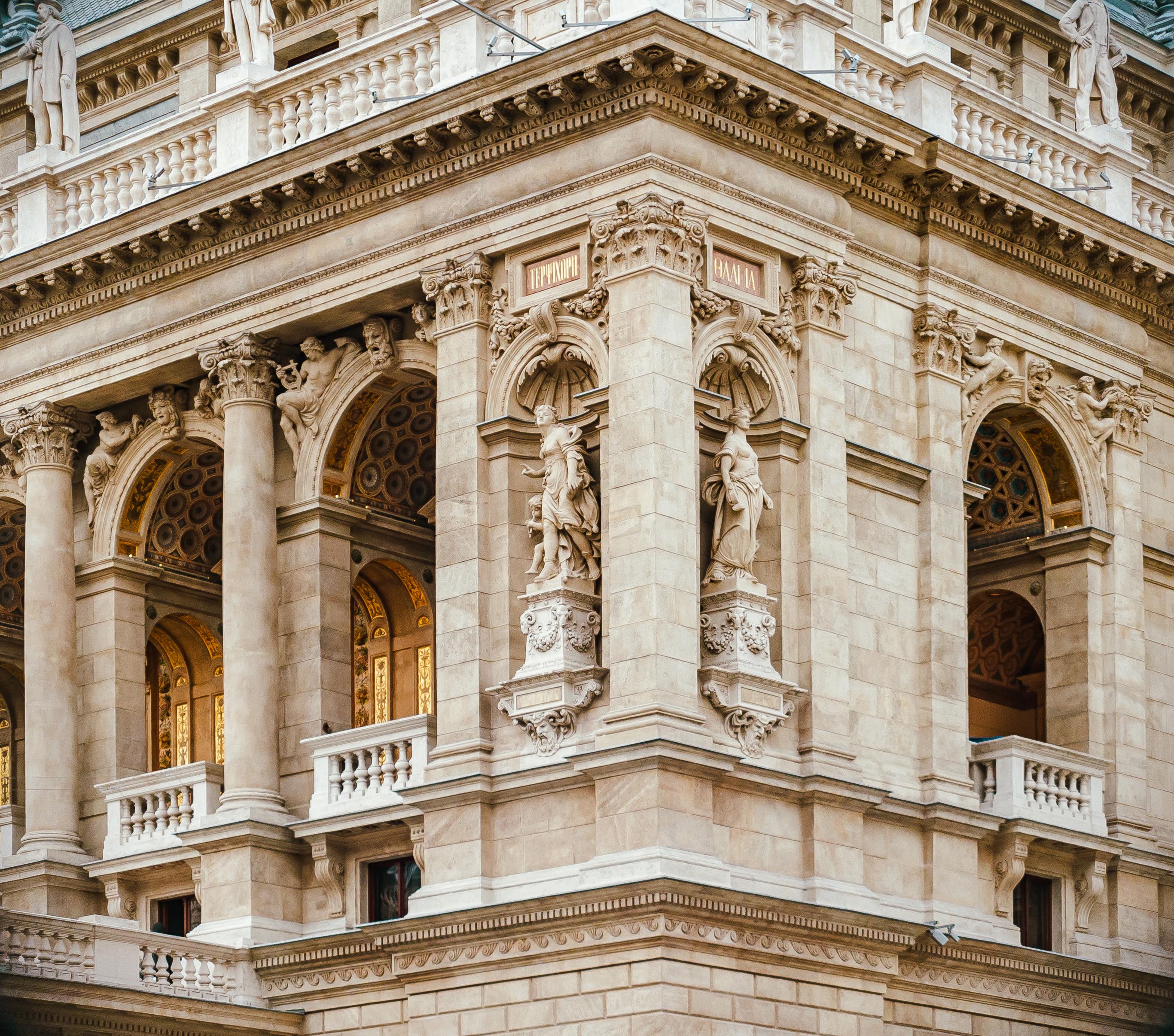
The two muses of the façade: Terpsichore (left) and Thalia (right) (photo: Balázs Both / pestbuda.hu)
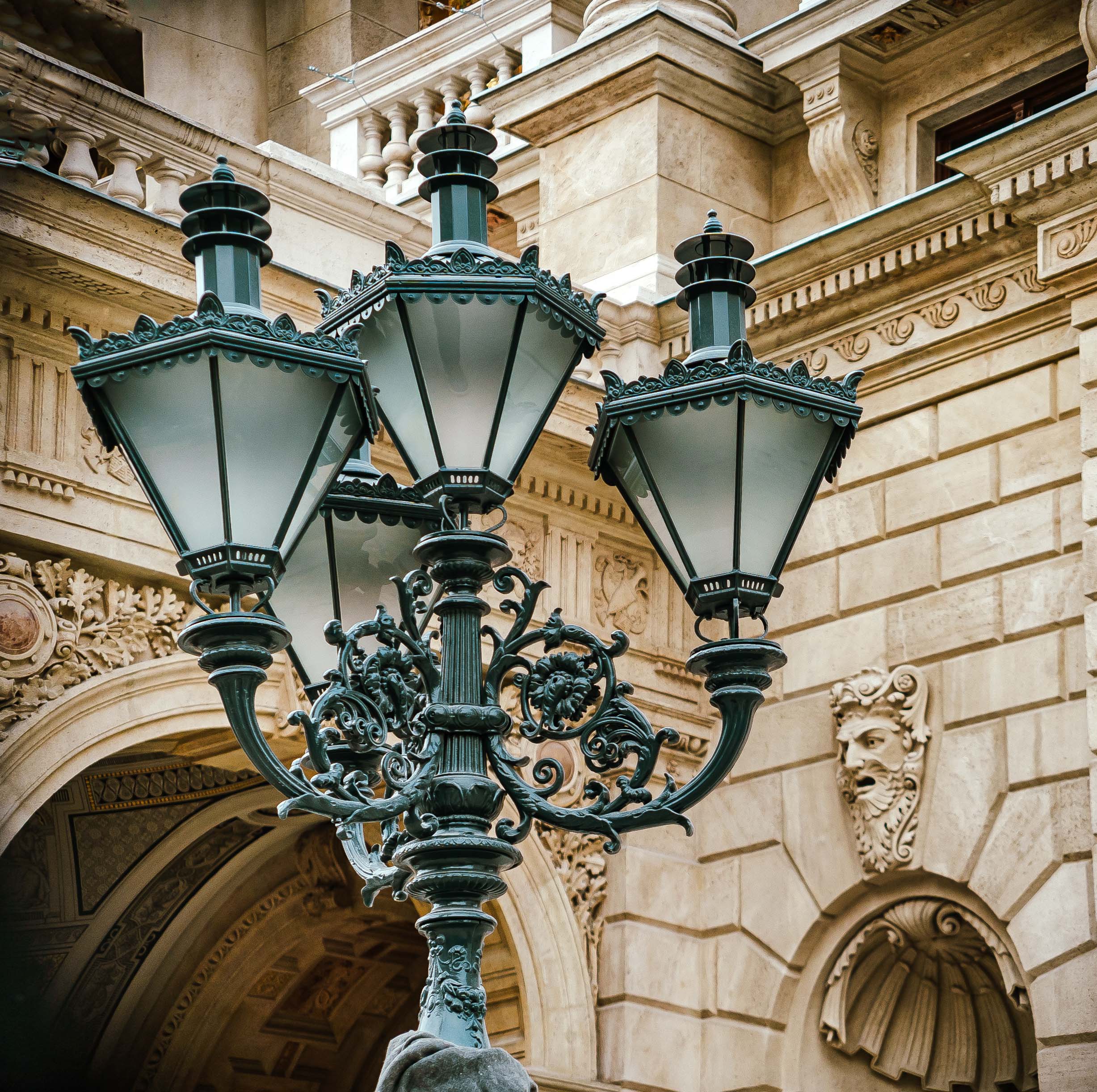
Candelabra in front of the renovated Opera House (photo: Balázs Both / pestbuda.hu)
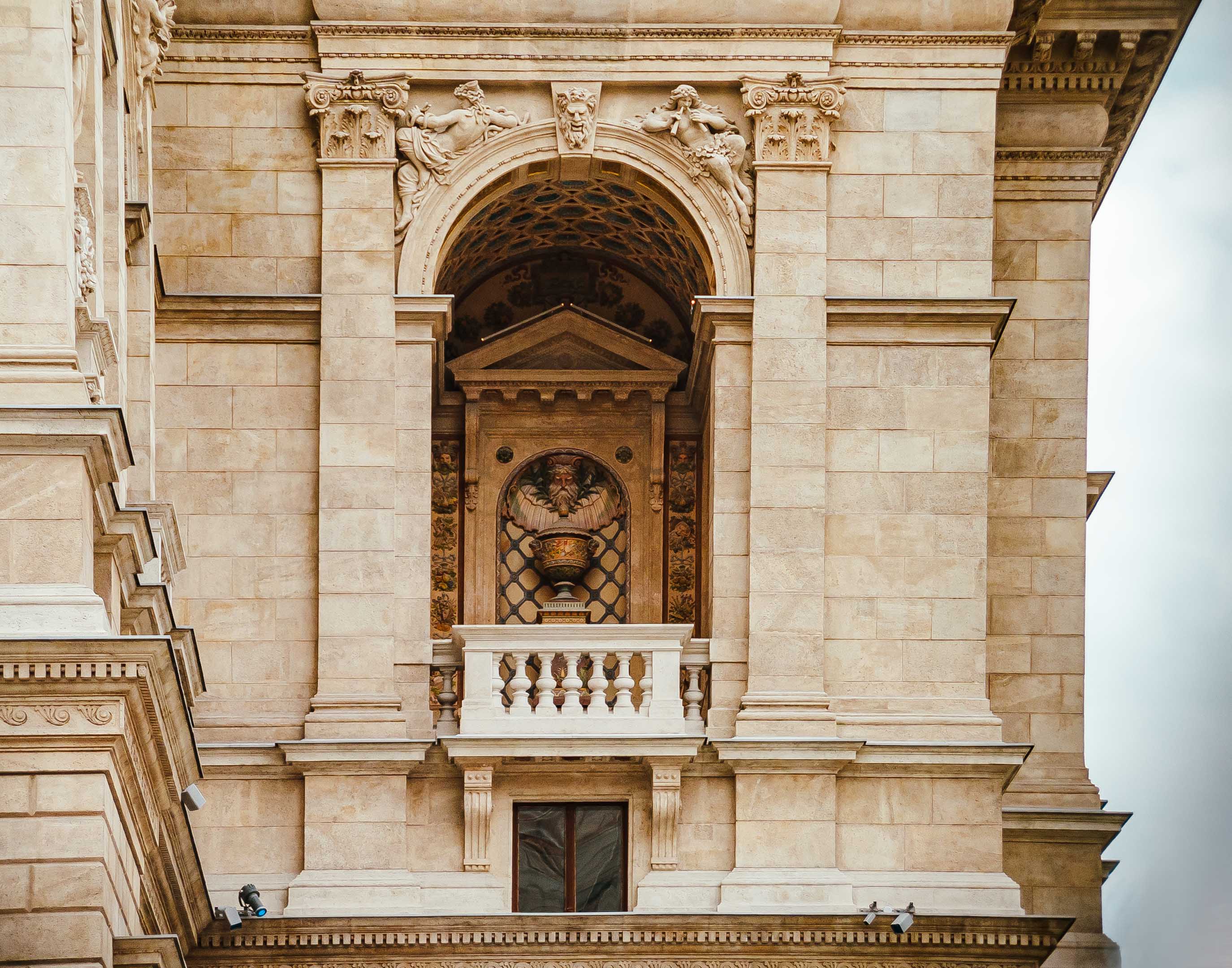
Part of the facade (photo: Balázs Both / pestbuda.hu)
The current transformation has set itself the goal of striking a balance between the original idea and modern needs. During the renovation, the extra chairs were removed, the side walls of the ground floor lodges were replaced with reeds, the 1984 stage machinery was replaced, a fire alarm system was installed, and a memorial storage was created on the ground floor. As it is a listed building, the architects constantly consulted with experts and carried out international comparative research on the geometric-acoustic relationships typical of 19th-century theatres. The orchestral trench was rebuilt according to Ybl’s plans, incorporating acoustic walls that could be changed to suit the needs of the performances, which could increase and decrease the size of the trench. The original large curtain was sewn again in England with the help of Hungarian seamstresses.
Cover photo: The Opera House nowadays, after the renovation (photo: Balázs Both / pestbuda.hu)

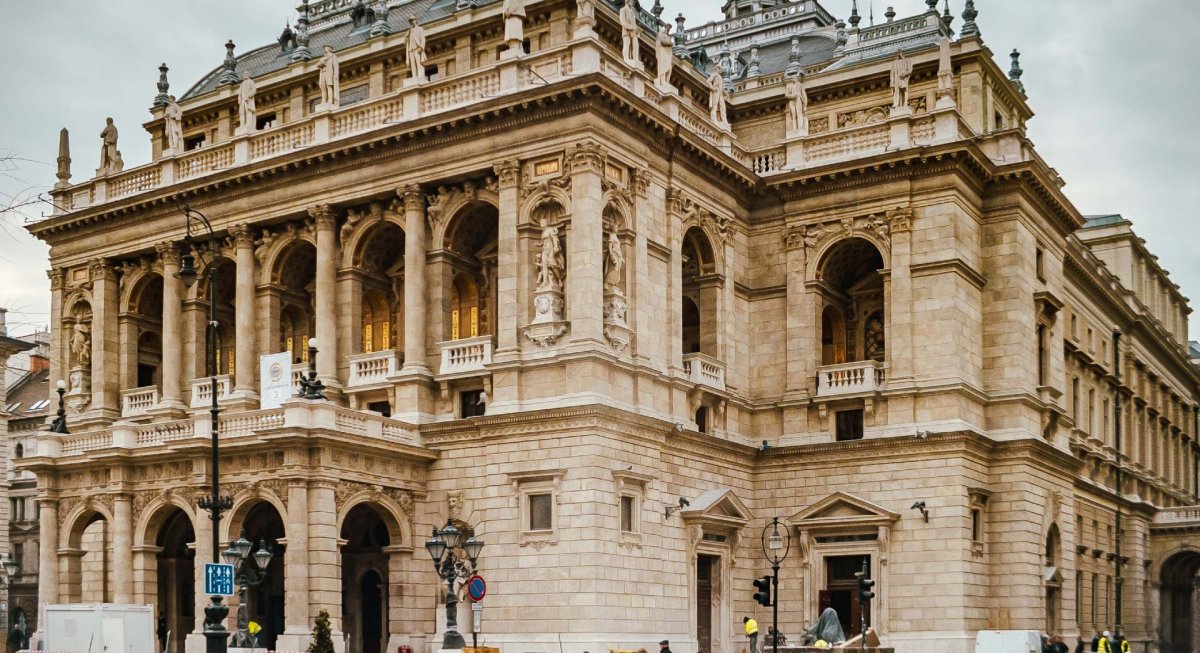


































Hozzászólások
Log in or register to comment!
Login Registration